Citrix Hypervisor vs VMware vSphere
May 28, 2023 | Author: Michael Stromann
10
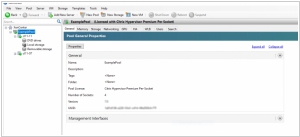
Citrix Hypervisor (formerly Citrix XenServer) is a leading virtualization management platform optimized for application, desktop and server virtualization infrastructures. Consolidation and containment of workloads on Citrix Hypervisor enables organizations of any vertical or size to transform their business IT compute infrastructures.
16
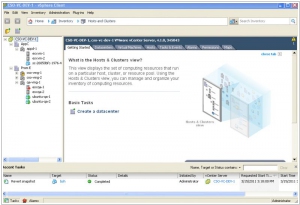
Build your own cloud infrastructure in your datacenter and remote sites on VMware vSphere the world’s leading server virtualization platform. Virtualize your x86 server resources and aggregate them into logical pools for allocation of multiple workloads. Get network services optimized for the virtual environment, along with simplified administration and management. Reduce the complexity of back-end storage systems and enable the most efficient storage utilization in cloud infrastructures.
Citrix Hypervisor (formerly known as Citrix XenServer) and VMware vSphere are two popular virtualization platforms that offer robust features for creating and managing virtualized environments.
Citrix Hypervisor is an open-source hypervisor based on the Xen Project. It provides a cost-effective virtualization solution with features such as live migration, high availability, and centralized management. It supports various operating systems and offers powerful virtual machine management capabilities. Citrix Hypervisor is often chosen for its affordability, scalability, and compatibility with Citrix's broader ecosystem.
VMware vSphere, on the other hand, is a comprehensive virtualization and cloud computing platform. It includes VMware ESXi hypervisor as its core component and offers a wide range of features and functionalities. vSphere provides advanced capabilities like Distributed Resource Scheduler (DRS), High Availability (HA), vMotion, and vCenter Server for centralized management and control. VMware vSphere is known for its enterprise-grade performance, robustness, and extensive ecosystem of integrated tools and solutions.
See also: Top 10 Virtualization platforms
Citrix Hypervisor is an open-source hypervisor based on the Xen Project. It provides a cost-effective virtualization solution with features such as live migration, high availability, and centralized management. It supports various operating systems and offers powerful virtual machine management capabilities. Citrix Hypervisor is often chosen for its affordability, scalability, and compatibility with Citrix's broader ecosystem.
VMware vSphere, on the other hand, is a comprehensive virtualization and cloud computing platform. It includes VMware ESXi hypervisor as its core component and offers a wide range of features and functionalities. vSphere provides advanced capabilities like Distributed Resource Scheduler (DRS), High Availability (HA), vMotion, and vCenter Server for centralized management and control. VMware vSphere is known for its enterprise-grade performance, robustness, and extensive ecosystem of integrated tools and solutions.
See also: Top 10 Virtualization platforms
Citrix Hypervisor vs VMware vSphere in our news:
2015. Citrix acquired data storage virtualization startup Sanbolic
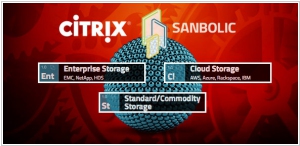
Virtualization leader Citrix has recently acquired Sanbolic, a specialized provider of virtual storage optimization services. This strategic move fills a crucial gap in Citrix's virtualization product portfolio, strengthening its overall offering. Sanbolic has a strong synergy with Citrix's desktop virtualization technology and was already regarded as a valuable partner prior to the acquisition, making this deal a logical step forward. By joining forces with Sanbolic, Citrix gains access to a unique set of capabilities, notably the ability to create software-defined storage pools and efficiently distribute storage across networks, even in situations where the nodes are geographically dispersed. This acquisition enhances Citrix's ability to deliver advanced virtualization solutions, further solidifying its market position.
2014. Citrix Receiver for Chrome becomes more business-ready
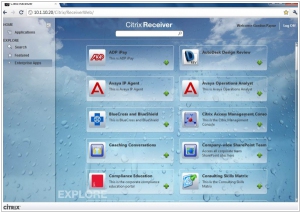
Google and Citrix have collaborated on a new release of the Citrix Receiver for Chrome, aiming to attract more businesses to Google's Chrome OS platform. The updated Receiver enables users to access their virtual apps and desktops through XenDesktop and XenApp on various devices such as smartphones, tablets, PCs, and Macs. With enhanced compatibility with Chrome OS, Receiver for Chrome now allows seamless utilization of Google Cloud Print. Moreover, improvements have been made to ensure better functionality of audio and video playback. Additional features encompass integration with Chrome OS's clipboard across local and remote applications, as well as monitoring capabilities through HDX Insight and support for direct SSL connections.
2007. Citrix to buy virtualization company XenSource
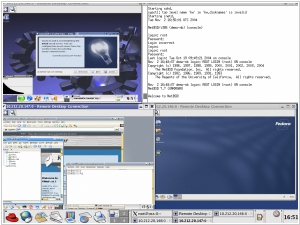
Citrix, a leading provider of thin client software for delivering business applications from servers to desktop computers, has recently completed the acquisition of XenSource, an open-source virtualization company, for approximately $500 million. This strategic move enables Citrix to expand its presence into the server and desktop virtualization market. XenSource offers a powerful open-source "hypervisor" software called Xen, which enables a single computer to simultaneously run multiple operating systems. This technology is particularly beneficial for replacing traditional servers with a more efficient, consolidated computing solution. XenSource's commercial offering, XenEnterprise, is built upon the Xen software platform. Virtualization has emerged as a highly sought-after technology in the IT industry as it empowers corporate customers to optimize their computing resources by consolidating numerous computing tasks onto fewer physical machines. Notably, VMware, the current market leader in virtualization, recently went public, experiencing a significant surge in its stock price, rising from $29 (its offering price) to $51.



